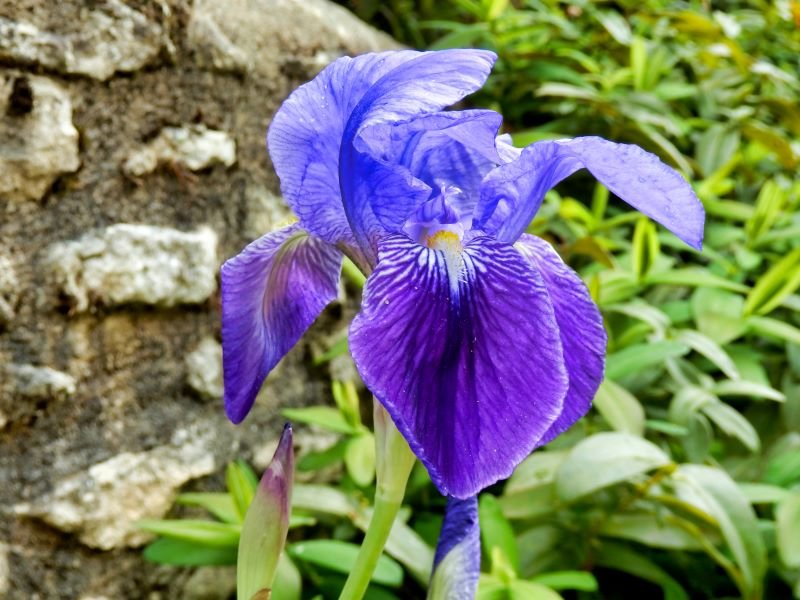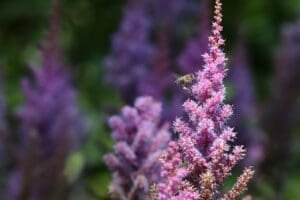Bearded iris are beloved for their showy, intricate blooms available in a diverse range of colours. Learning how to grow bearded iris allows you to incorporate these resilient perennials into your garden for years of beauty. This comprehensive guide covers everything you need to successfully grow vibrant bearded iris.
You might also be interested in: Summer Flowering Bulbs for Wild Gardens
The Beauty of Bearded Iris
Graceful bearded iris instantly conjure up images of charming cottage gardens and elegant floral arrangements. These classic perennials are prized for their stunning blooms in shades of white, yellow, pink, purple, blue, and black. With ruffled petals and fuzzy “beards,” bearded iris flowers have an elegant, old-world appeal.
But bearded iris are more than just pretty faces in the garden. These resilient plants thrive for years with minimal care. Learning the basics of how to grow bearded iris sets you up for success cultivating these garden gems. Once established, they require little watering or maintenance while rewarding you with breath-taking spring blooms year after year.
Choosing the Right Iris
With thousands of bearded iris varieties, selecting the right iris ensures your planting goals are met. Factors like bloom time, plant size, and colour preferences help determine the ideal varieties.
Bloom season – Early, mid, and late-season bloomers extend the bearded iris display. Choose a mix for continuous spring colour.
Plant size – Dwarf iris grow under 8 inches, intermediate from 8 to 15 inches, and tall iris reach up to 4 feet tall. Site them accordingly.
Colour – Golds, reds, purples, pinks, whites, and bicolour offer incredible diversity. To avoid disappointment – review colour descriptions before purchasing.
Garden centres and specialty growers provide detailed descriptions to match bearded iris to your landscape needs and personal taste.
Site Selection and Soil Preparation
Proper planting location and soil preparation allows your bearded iris to flourish. Bearded iris demand full sun and well-drained soil enriched with organic matter.
- Locate in full sun (at least 6 hours daily)
- Ensure good drainage and air circulation
- Amend planting beds with compost or rotted manure
- Adjust alkalinity to a pH between 6.0 to 7.0 if needed
- Mix in balanced organic fertilizer according to package directions
- Allow amended soil to settle before planting
Addressing soil needs prior to planting gives bearded iris the best start. Well-prepared sites with sunshine and drainage produce the most flowers and vigorous growth.
Planting Bearded Iris Rhizomes
Bearded iris propagate from rhizomes – thick underground stems that form roots. Early fall is ideal for planting newly acquired rhizomes allowing time to establish before winter dormancy and spring flowering, but container-grown plants can be set out anytime during the growing season.
- Dig holes or trenches as deep as each rhizome is tall
- Place rhizomes in holes with tops slightly exposed
- Space standard iris 18- 24 inches apart; adjust for dwarf and tall varieties
- Backfill soil and tamp gently, but firmly around rhizomes
- Water thoroughly after planting
Take care not to plant the rhizomes too deep to prevent rotting. Allowing the tops to peek through the soil ensures proper growth. Once planted at the proper depth, provide a good watering to settle soil around the roots.
Watering and Fertilizing
Delivering the right amount of water and nutrition keeps your bearded iris thriving. Deep, infrequent irrigation is best to encourage strong root system development. Slow-release organic fertilizers prevent build-up of excess nutrients.
- Provide 1 to 1 1/2 inches of water per week during spring and summer, allowing soil to dry slightly between waterings
- Increase water needs during bloom time in early summer
- Apply an organic, phosphorus-heavy fertilizer twice per year – in early spring and 6 weeks after peak flowering
- Reduce water and cease fertilizing after bloom period through fall
Adequate water keeps plants healthy and fuels the rapid growth preceding the bloom season. Supplementing with fertilizer gives bearded iris the nutrients needed for abundant flowers. But take care not to overdo either, as excess moisture or fertilizer can harm the rhizomes. Proper watering technique and fertilizer dosage prevents problems down the road.
Dividing Bearded Iris
Dividing crowed clumps of bearded iris rhizomes every 3-4 years revitalizes plants for improved flowering and vigour. Expand your plantings at the same time by replanting extra rhizomes.
- Divide iris in midsummer through early fall
- Carefully dig up entire clump and wash off soil
- Trim leaves back halfway – trim roots and discard dead portions
- Gently pull rhizome clump sections apart by hand
- Replant healthy divisions 10-15 inches apart
Though transplanting can be performed anytime during the growing season, dividing bearded iris in summer allows divisions to establish before going dormant in winter. But older leaves should be trimmed back halfway at transplanting to reduce transplant shock and soil is gently washed off divisions to inspect roots and rhizome health.
Pest and Disease Prevention
When cultivated properly, bearded iris have relatively few pest and disease problems. But familiarizing yourself with the most common issues helps you catch problems early. Preventative cultural practices also limit pesky issues from developing.
- Ensure adequate garden sanitation by removing plant debris
- Promote air circulation with proper spacing and avoiding overcrowding
- Inspect plants frequently and remove diseased foliage promptly
- Control iris borers by removing and destroying infested leaves immediately
Keeping the garden free of litter with frequent inspections quickly identifies any disease or insects before infestations take hold. Catching troubles early preserves plant health. Be on high alert for iris borers that can ravage your iris patches if left uncontrolled.
FAQs – how to grow bearded iris
Q. When is the best time to plant bearded iris? The best time to plant bearded iris is in the fall, after the summer heat has subsided. This gives rhizomes time to establish roots before going dormant for winter.
Q. How deep should I plant bearded iris rhizomes? Plant bearded iris rhizomes with the top of the rhizome just barely exposed to the surface of the soil. Planting too deeply causes rotting.
Q. How often should I water my bearded iris? Water bearded iris deeply and infrequently, allowing the soil to dry out between waterings. Too much moisture causes root or rhizome rot.
Q. What type of fertilizer should I use for bearded iris? Use a balanced organic fertilizer made for flowering perennials. Look for formulas higher in phosphorus to promote abundant blooming.
Q. How often should I divide my bearded iris? Divide bearded iris every 3-4 years to prevent overcrowding and encourage vigorous growth and flowering. Dividing in summer gives new divisions time to establish before winter dormancy.
Cultivating bearded iris rewards the gardener with a carefree display of breath-taking blooms year after year. A little bit of knowledge on how to properly site, plant, and care for these rugged perennials leads to great success with bearded iris in any garden.






